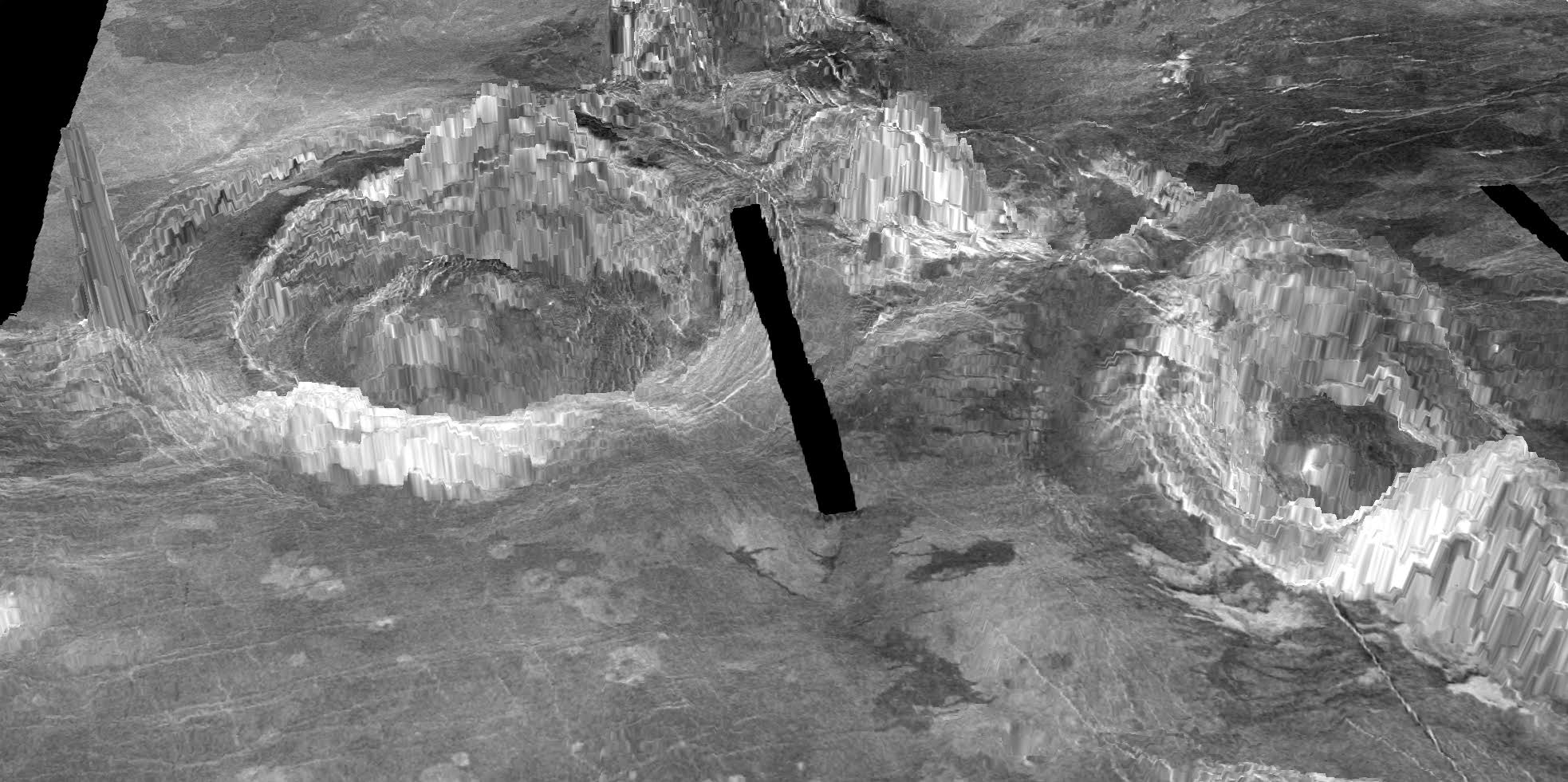Venus probably has active volcanoes right now

Venus is a geologically active world today, a new study suggests.
Researchers have identified three dozen features on Venus that were likely created by volcanism in the very recent past, potentially reshaping our understanding of the hellishly hot planet and its evolution.
"This is the first time we are able to point to specific structures and say, 'Look, this is not an ancient volcano but one that is active today — dormant, perhaps, but not dead,'" study co-author Laurent Montési, a professor of geology at the University of Maryland, said in a statement. "This study significantly changes the view of Venus from a mostly inactive planet to one whose interior is still churning and can feed many active volcanoes."
Related: Photos of Venus, the mysterious planet next door
Scientists have long known that Venus remained active long after fellow rocky planets Mercury and Mars lost their geological mojo. The second rock from the sun sports far fewer craters than those two worlds, a count that's consistent with a global resurfacing event some 500 million to 700 million years ago. (Our solar system's other inner rocky planet, Earth, remains extremely active today, of course.)
But recently, evidence has been building that Venus' volcanic activity continued much later into the planet's history — perhaps even through to the present day. And the new study bolsters that viewpoint.
The researchers, led by geophysicist Anna Gülcher of ETH Zürich in Switzerland, used computer simulations to model in unprecedented detail the formation and evolution of Venus' ring-shaped volcanic structures, which are called coronae.
Breaking space news, the latest updates on rocket launches, skywatching events and more!
"The improved degree of realism in these models over previous studies makes it possible to identify several stages in corona evolution and define diagnostic geological features present only at currently active coronae," Montési said.
The team then used this knowledge to hunt for young coronae in imagery of the Venusian surface captured by spacecraft such as NASA's Magellan probe, which orbited the planet from 1990 to 1994.
"We are able to tell that at least 37 coronae have been very recently active," Montési said.
Venus' coronae are generated by plumes of molten rock rising from the mantle up through the crust, a process similar to the one that formed the Hawaiian Islands here on Earth. (Most of our planet's volcanism, however, occurs along the boundaries of tectonic plates, which modern Venus doesn't seem to possess.)
The 37 young coronae are clustered in just a few Venusian regions, Gülcher and her colleagues found. These areas "may serve as interesting targets for detailed investigation by future spacecraft missions," the researchers wrote in the new study, which was published online today (July 20) in the journal Nature Geoscience.
Mike Wall is the author of "Out There" (Grand Central Publishing, 2018; illustrated by Karl Tate), a book about the search for alien life. Follow him on Twitter @michaeldwall. Follow us on Twitter @Spacedotcom or Facebook.

Michael Wall is a Senior Space Writer with Space.com and joined the team in 2010. He primarily covers exoplanets, spaceflight and military space, but has been known to dabble in the space art beat. His book about the search for alien life, "Out There," was published on Nov. 13, 2018. Before becoming a science writer, Michael worked as a herpetologist and wildlife biologist. He has a Ph.D. in evolutionary biology from the University of Sydney, Australia, a bachelor's degree from the University of Arizona, and a graduate certificate in science writing from the University of California, Santa Cruz. To find out what his latest project is, you can follow Michael on Twitter.
